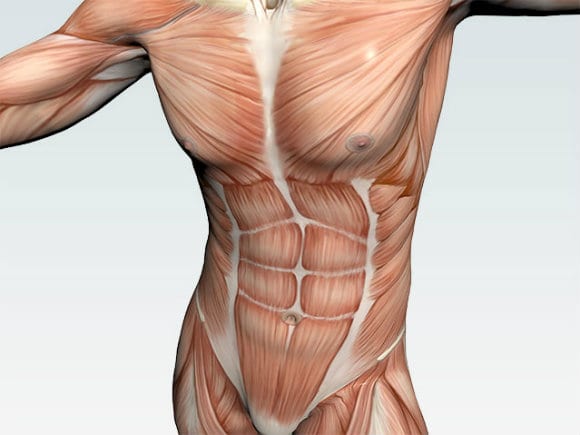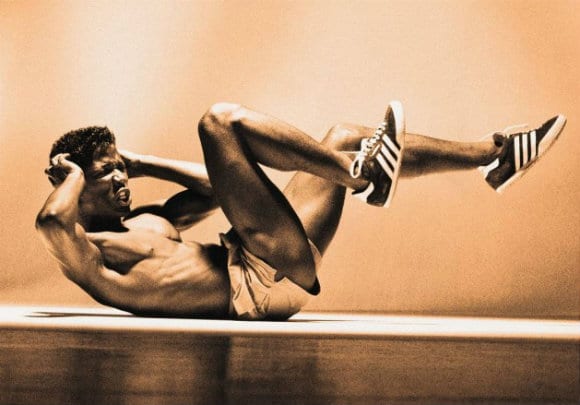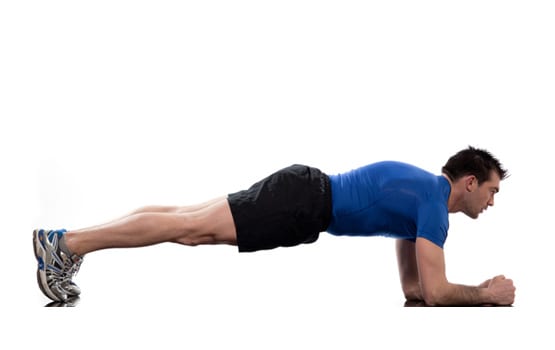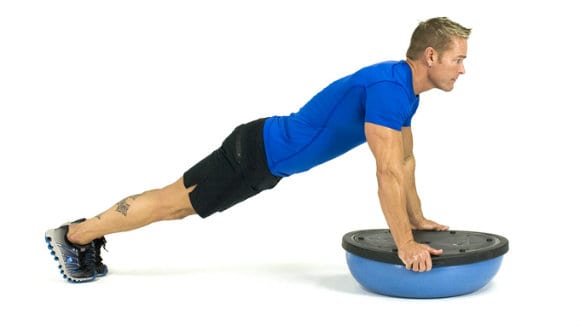By the healthiergang writer , student in Medicine and Surgery.
Core Stability
Defining precisely what core stability is is not easy, each author has his own way of understanding it and therefore of characterizing it; certainly it is the natural extension of the role that was previously attributed almost exclusively to muscles of the abdominal region in the control and execution of some motor gestures.
In a fairly complete view it can be understood as “the ability of control the position and movement of the trunk over the pelvis to allow optimal production, transfer and control of forces and movement to the distal segments in integrated athletic activities "(Kibler).

The Core has been described as a cylindrical box composed of the abdominal muscles anteriorly, buttocks and paraspinals posteriorly, the diaphragm as the upper part and the pelvic floor / hip joint as the lower base (Richardson C. et all 1999) and in the even broader view as "all components extending from the shoulders to the knees with focus on abdominals, low back and hips, able to give stability and transfer the force of the movement to the appendicular regions ".
The Core Muscles
The muscles included in the concept of Core are therefore very many and together, working as a large chain, they play a very fine work in posture control both in the static phase and in the dynamic phase.
Muscles defined as local stabilizers, Transversus of the abdomen, Multifido, Psoas and Mm. of the pelvic floor, continuously check the position of the lumbar spine.
- global stabilizers, External and internal oblique, Middle Gluteus, generate forces to control movement in stable conditions, that is, they perform eccentric work by causing small adjustments in lateral movements, while the global mobilizers, Rectus abdominis, Piriformis and Bi-articulars of the hip , generate forces that allow deceleration movements of larger loads.
Core training
The "core stability" training makes sense both to increase theaccuracy of the technical gesture in sports and in prevent / recover musculoskeletal pathologies and this makes us understand the usefulness of strengthening this area both in daily activities and in the most demanding ones.
Depending on the previous cases, an excellent goal to be achieved will be to carry out the activities in absence of pain and the increase in performance in the execution of throws, jumps and runs not necessarily without pain, but with reduced incidence of accidents.

The kinetic chains that we have considered above are used in the transfer of force whether you want to take an object from a shelf or if you want to throw a ball: the movement always starts from the foot and the lower limb, reaches the arm and the lower limb. hand, and necessarily passes through the Core, which has the task of conveying the necessary force.
An alteration in the position of the Core or one incorrect muscle recruitment, forces the various segments to work without synergy and the most important consequences are pain in the lower back, shoulders or knees in daily activities and more important traumas in athletes, such as rupture of ligaments or muscle-joint trauma (low back pain, groin pain and iliotibial band syndrome), finding ourselves in the presence of gestures performed with submaximal workloads.
Core Exercises
In the preventive field, the exercises to be carried out have as their pivotalincreased muscle activity stabilizer, so the work is mainly focused on Local and global stabilizers; to do this, unstable surfaces are used, which simultaneously exercise both neural and muscular activities.

Plank
As a first exercise he plank it is great for testing our strength and stability; the subject must appear as an upright person but horizontally. Repeat 3 times holding the position about 30-45 ".
Rollout con la Fitball
You place your fists on the ball, your knees on the ground and you slide your forearms on the ball keeping your torso always straight like a bridge. The natural evolution of the exercise is the use of a wheel (ab-wheel) which, however, is much more complicated and therefore to be recommended only to experienced athletes. Perform 2-3 sets of 20 to 30 slips.
Plank sul BOSU
In this case the Plank seen above will be complicated by the instability offered by the Bosu; the execution can also be carried out with straight arms, emphasizing the work also at the shoulder level, remembering to always keep the adducted shoulder blades and the position of the trunk firmly.
Bridge
Excellent exercise to become aware of the activity of the buttocks. Start on your back with your arms at your sides and knees bent; bring the pelvis up by pushing with the buttocks, always keeping the trunk under tension. Perform 10-12 repetitions 3 times.
Push-ups on the Bosu
Now to the static position seen before we add some pushups on the arms; the same rules as above apply. To increase the difficulty of the exercise, you can put your feet on a raised surface (20-30 cm) and further complicate it by wearing a weighted vest: your Core will ask you for mercy!

After this range of exercises that have as their main task the strengthening of the muscular corset around the spine, and its correct recruitment in daily activities, it is time to move on to some exercises, with a component static and dynamic rotational, more suitable for improving performance.
One-knee cutting exercise with cables
Grasp the high cable and bring it down to the hips, pulling with one hand and pushing with the other; the position of the torso should not be altered. The movement must be focused on the buttocks and inner portions of the thigh. Logical progression of the stable cut is the sequential one, where the rotation of the trunk is introduced.
Exercise of lifting on one knee
This is the reverse of the first exercise, as now the cable to be used is the low one that is pushed over the head on the opposite side to that of the cable column. Make sure that the thrust is straight and that there is no movement of the hips. Activate buttocks to abdomen. Then you can move on to the sequential lifting as you did for the Cut.
The further progressions involve the carrying out of standing exercises; being quite complicated, the eye of an external expert is always required to assess the presence of incorrect movements. Good workout!


























